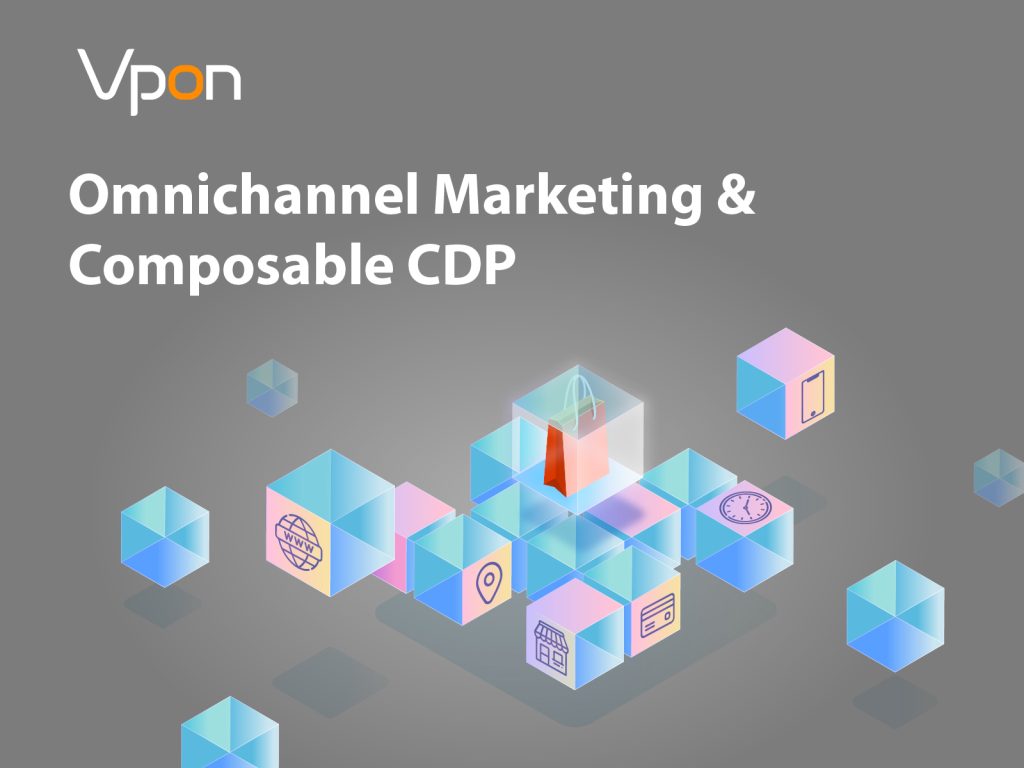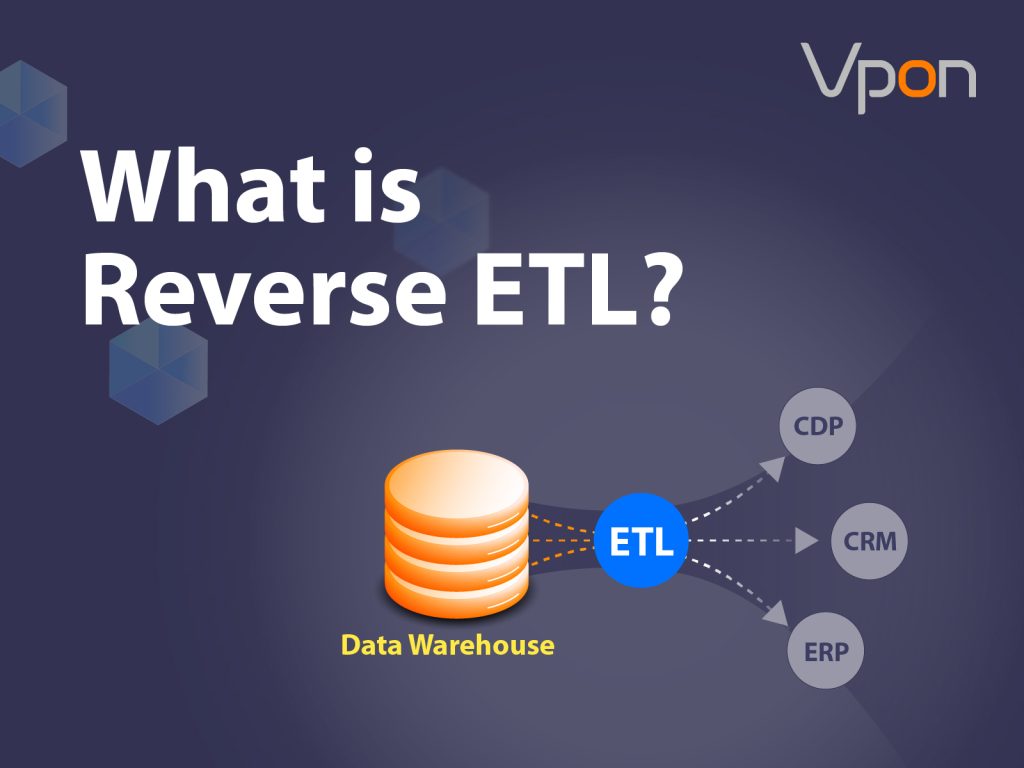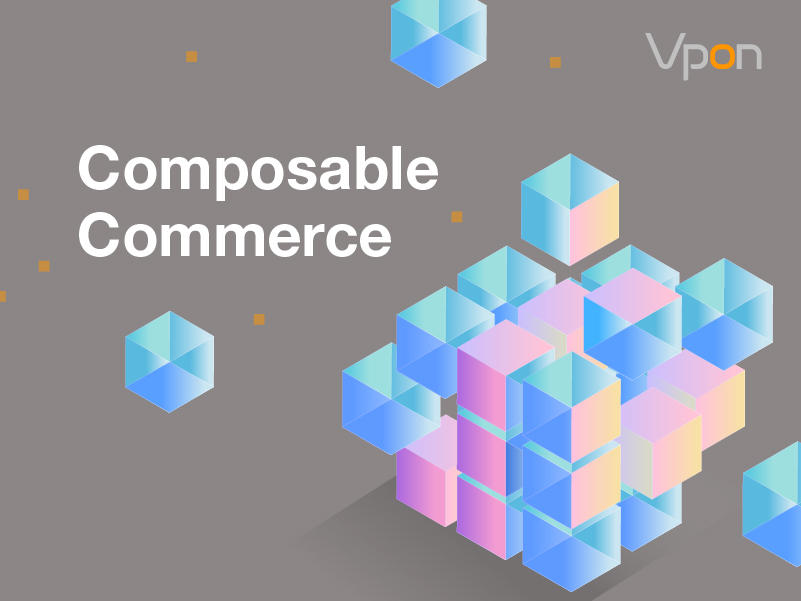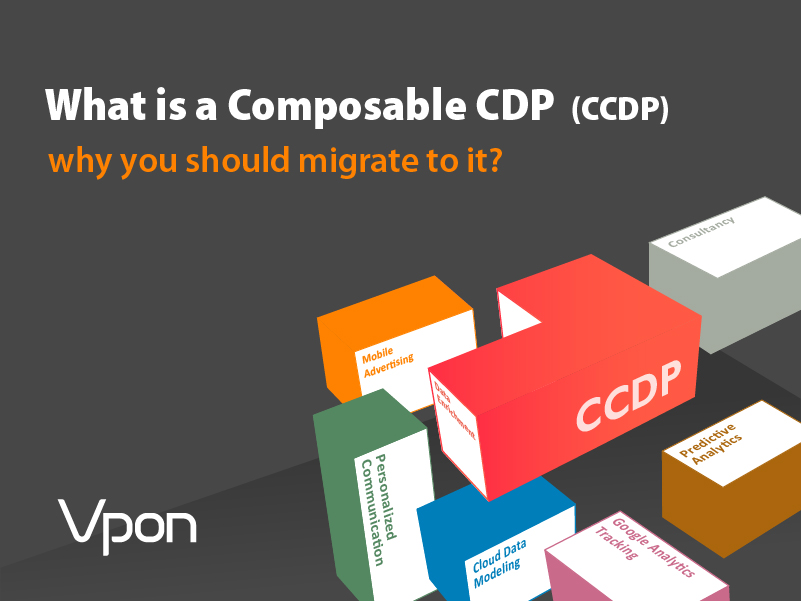In today’s digital era, customers crave personalized experiences. Omnichannel marketing provides consistent brand experience across all touchpoints by integrating online, offline, mobile devices, and social media. Through a Composable Customer Data Platform (CCDP), businesses can integrate data from multiple sources to create a 360-degree customer profile. This enables them to deliver personalized messages and offers, such as sending SMS discount notifications when a customer browses specific products. This OMO (Online-Merge-Offline) strategy, which integrates online and offline experiences, can effectively enhance customer satisfaction, loyalty, and retention rates, ultimately improving personalized customer experiences and brand loyalty for businesses.
Table of Contents
What is Omnichannel Marketing?
Omnichannel marketing is an evolution of multi-channel marketing. For multi-channel marketing, businesses use multiple methods to connect with customers. But why is it important? Well, with omnichannel marketing, businesses can create a cohesive brand image across various channels and touchpoints.
For example, you might send out email campaigns, run web ads, and have TV spots. But what if each touch was a new interaction for the customer? This may leave the customer confused and may hurt the brand image.
With omnichannel marketing, all interactions are synchronized across various channels and touchpoints into one marketing solution, hence creating a seamless experience for the user as you build on their previous interactions. Looking at an example can help you better understand this concept.
Let’s say that a customer is interested in buying shoes. They see an ad on an outdoor advertising board for your product (imagine a Vegas Sphere with your solution/product on it) and head to your website to learn more. You can track the particular brand of shoes they are interested in. Then, send them a notification when the shoes are on sale or help them find a local store so they can try them on in person.
Problems Setting Up An Omnichannel Marketing Ecosystem
When done right, omnichannel marketing can be highly effective. Companies implementing this approach can increase their revenue by up to 15 percent. However, here are some top reasons why businesses can be reluctant to implement this approach.
Integration Complexity
One of the primary challenges is integrating diverse systems and platforms to create a unified and seamless customer experience. This involves connecting online and offline channels, as well as ensuring smooth data flow between various technologies. Overcoming integration complexities can be resource-intensive and requires careful planning to avoid disruptions.
Data Silos
Businesses often face the challenge of data silos, where customer information is stored in separate databases across different departments or channels. Breaking down these silos is crucial for obtaining a comprehensive view of customer interactions and preferences. Without a unified customer profile, delivering consistent and personalized experiences becomes difficult.
Consistent Messaging Across Channels
Maintaining a consistent brand message and experience across multiple channels poses a significant challenge. Different channels may have unique requirements or user expectations, making it challenging to ensure a cohesive brand identity. Achieving uniformity in messaging and branding is essential for building customer trust and recognition across the entire omnichannel journey.
Although these challenges may seem overwhelming, Composable Customer Data Platform (CCDP) could be the best way to overcome these obstacles. With CCDP, businesses can seamlessly create an omnichannel approach by integrating various technologies, services, and channels. CCDP provides a unified and data-driven foundation to help businesses deliver personalization regarding the customer journey. Let’s explore this idea more below.
The Advantages of CCDP for Omnichannel Marketing
The good news is that tools are available to help you keep track of the data to create a powerful omnichannel marketing experience. CCDPs make it easy to gather personalized data on your customers. Here are some of the key characteristics of CCDPs for omnichannel marketing:
Data Unification
A CCDP allows you to consolidate all your data in one place. Pulling the information from all your marketing channels into one data platform. It isn’t just the marketing information either. HR, sales, and customer relations can all feed into one central data warehouse. This approach also helps create unique profiles that reflect all your customers’ interactions with the brand.
Real-Time Insights
Having a lot of data is a good start. But you’ll need to know how to utilize it. A CCDP can also help with this aspect. You’ll be able to make sure that all departments can access data and are on the same page. You can also use this to track campaigns in real-time. For example, you can see which channels get the most engagement, spot the pain points, and identify the best way to spend your marketing dollars.
Personalization
The advertising marketplace has become saturated. The average American can see up to 10,000 ads per day. Most of these get tuned out. Personalizing your ads helps tailor your advertising or website experience to suit their needs to increase brand loyalty and get repeat orders.
Customer Audience Curation
You will be able to build a detailed database of customers. Each can be broken down into segments. For example, you should group people by age. Or curate them based on the things they are interested in. This will make it easier to run specific campaigns. For example, you could run a campaign aimed only at parents with young children.
Data-Driven Workflows
CCDPs aren’t just about a better experience for customers. They also take the pressure off your employees. You’ll get real-time data to help you decide where to place your business focus. They can also improve the performance of your customer support teams. By looking at the customer’s history, support can learn & resolve issues experienced by the customer to create a smoother customer journey.
Regarding omnichannel marketing, a CCDP is a missing piece of the puzzle because is the tool needed to seamlessly integrate an omnichannel approach. It is no wonder why there are so many large corporations and enterprises that use this approach. Let’s examine some real-life applications of some well-known businesses that have embraced an omnichannel marketing approach.
Case Studies of Businesses Using Omnichannel Marketing
Omnichannel strategies are prevalent in retail (both B2B and B2C) and extend to diverse sectors such as finance, tourism, & healthcare. Medtech companies employ multiple channels in the healthcare industry, including digital marketing, inside sales, portal, e-commerce, and hybrid sales-rep interactions, to engage with healthcare professionals effectively.
Here are some businesses that use this approach to gain an edge in the market.

The Osaka Tourism Board
integrated first-party data from its own website, applications, and survey responses, along with third-party data including government open data, traveler footprint data, consumption data, and social media data. Adopting Vpon’s CCDP solution’s concept, a customized Data Management Platform (DMP) was created for the Osaka Tourism Board. Through this platform, these datasets were consolidated and analyzed using AI to further understand travelers’ interests and preferences, generating objective and practical metrics on a visualized data dashboard. By integrating online and offline data, precisely analyzing traveler behavior, and formulating corresponding marketing strategies, the Osaka Tourism Board successfully attracted more visitors, increased tourism spending, and created sustained economic benefits.

Odakyu Electric Railway
is a success story in the travel industry. With Vpon’s assistance, they integrated online and offline data to enhance traveler experience and optimize travel promotion strategies. They consolidated various data sources, including online websites, ticketing systems, Google analytics tools, as well as offline physical ticketing kiosk information. Vpon also provides data analysis services for inbound tourists, visualization of location information data, and utilizes visitor count, dwell time, and movement analysis to help Odakyu Electric Railway understand the behavior and trends of inbound tourists, enabling them to map out complete customer journeys and provide consistent brand experiences across all touchpoints.
This comprehensive data integration allows Odakyu Electric Railway to generate in-depth data analysis reports, gaining profound insights into customer behavior and preferences. It enables them to design personalized marketing campaigns, such as customized eDMs or app push notifications, while effectively guiding online visitors from their website to offline attractions, for example, by promoting offline travel discounts. Moreover, they leverage this data to offer personalized travel recommendations to inbound tourists, significantly enhancing the traveler’s experience. This omnichannel approach not only markedly improves the overall traveler experience but also creates more business opportunities for Odakyu Electric Railway, fully demonstrating the value and benefits of omnichannel marketing

ABC-Mart
a renowned Japan footwear retailer, is dedicated to integrating its online and offline operations to create a seamless shopping experience. They integrate data from various systems including their App, POS, CRM, CDP, and ERP, and combine it with GA4 analytics tools to gain deep insights into customer behavior and preferences. They analyze the correlation between customers’ online and offline behaviors, such as purchasing preferences, browsing history, and frequency of physical store visits, and transform these data into actionable business strategies, including product recommendations, personalized promotions, and inventory management. Furthermore, with Vpon’s assistance in customizing analytical needs, ABC-Mart produces multidimensional insight reports, such as analyzing the behavior patterns of customers who choose in-store pickup after online purchases. This helps them understand customer preferences and needs, enabling them to adjust in-store product displays, provide more accurate product recommendations, and optimize the pickup process. By enhancing customer experience and maximizing the value of data, ABC-Mart achieves rapid business growth.
These examples showcase how corporations in various sectors leverage omnichannel marketing to create a unified, personalized, and convenient customer experience across different channels. Furthermore, omnichannel marketing helps companies stay competitive in a dynamic digital landscape to build strong connections with customers through consistent, integrated marketing messages.
The Power of CCDP for Omnichannel Marketing
It’s widely acknowledged that contemporary customer expectations are elevated, with the effectiveness of upselling and cross-selling hinging on the strategic implementation of omnichannel journeys and personalized interactions. Furthermore, with the marketing landscape is growing more complex each year. Customers are demanding more ways to interact with brands and are bored with traditional marketing strategies.
Businesses need omnichannel marketing to create a cohesive and seamless customer experience across various channels, such as online, offline, mobile, and social media. This approach ensures that customers can engage with a brand consistently regardless of the platform they choose. Omnichannel marketing enhances customer satisfaction, loyalty, and retention by breaking down silos between channels and offering a unified brand experience for better ROI. But how can businesses create that omnichannel marketing experience that customers are looking for?
The answer lies in a customer-centric platform like a Composable Customer Data Platform (CCDP). As we briefly mentioned earlier, CCDP is a powerful tool for managing and unifying customer data without the need to manage multiple data silos. It enhances the adaptability, personalization, and efficiency of e-commerce operations by leveraging a unified and dynamic source of customer data to help you create an 360 profile of your customers and send personalized message to various marketing touchpoints. This integration empowers businesses to deliver highly tailored and responsive customer experiences across various channels.
Start Creating an Omnichannel Marketing Ecosystem with Vpon AI Big Data Group
Many businesses today are adopting the idea of integrating CCDP for omnichannel marketing, and there are so many obvious benefits for businesses to integrate these systems into the ecosystem. Although it may sound simple, it is not easy to integrate unless you know what you are doing.
For example, imagine that you have an enterprise that focuses on selling sporting goods in the United States and has thousands of retail stores, an app, & online shop so that people can order from your online shop and pick them up at your stores. By integrating a composable commerce architecture, you could easily incorporate your logistics system commerce system so that customers can easily pick up or return orders from the stores. Unlike traditional methods, this type of composable commerce would help you customize and optimize modular parts of your business. To take it up a notch, you integrate your CCDP with your composable commerce to develop an omnichannel marketing ecosystem.
Although this may seem like a beautiful endgame, it’s really about getting your business to this step, which will take time and effort. Vpon Big Data Group can strategically support businesses by designing, customizing, and creating an omnichannel marketing platform that fits your needs. Talk to us and learn how we can help you design your omnichannel ecosystem and enhance your 1st party data today.








